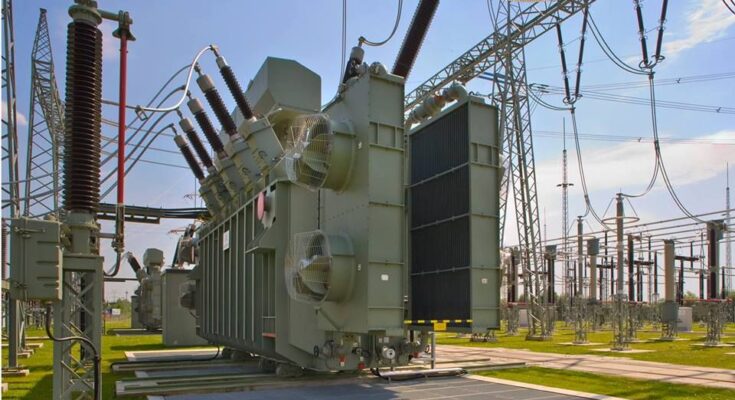Global Communication Transformer Market: Overview
The communication transformer market refers to the segment of the electronics industry that produces transformers used in communication devices and systems, such as telephones, modems, and wireless communication devices.
As per estimates by Analytics Market Research 2021, the global communication transformer market was valued at approximately USD 2.1 billion and was projected to grow at a CAGR of around 7% from 2023 to 2032. The market growth is attributed to the increasing demand for communication devices and systems across various industries, including healthcare, automotive, and telecommunication. One trend in the communication transformer market is the adoption of wireless communication technologies, such as 5G and IoT, which require high-frequency transformers with low power losses and high efficiency. Another trend is the increasing use of communication transformers in renewable energy systems, such as wind and solar power plants, to support the efficient transfer of power to the grid.
In addition, the demand for miniaturized communication transformers is increasing, especially in the consumer electronics industry, where smaller devices are preferred. This has led to the development of advanced materials and manufacturing technologies, such as surface-mount technology (SMT), which enable the production of smaller and more efficient transformers. Overall, the communication transformer market is expected to continue to grow in the coming years, driven by the increasing demand for communication devices and systems across various industries and the adoption of advanced technologies.
Global Communication Transformer Market Segmental Overview
Segmental analysis of the communication transformer market can be performed based on various factors such as type, application, and region.
Based on type, the communication transformer market can be segmented into power transformers and signal transformers. Power transformers are used for power distribution and transmission in communication systems, while signal transformers are used for impedance matching and isolation in communication devices.
Based on application, the communication transformer market can be segmented into telecom, automotive, healthcare, consumer electronics, and others. The telecom segment includes applications such as mobile phones, base stations, and other telecommunication equipment. The automotive segment includes applications such as in-vehicle communication systems, GPS navigation systems, and entertainment systems. The healthcare segment includes applications such as medical imaging equipment and patient monitoring systems. The consumer electronics segment includes applications such as computers, laptops, tablets, and smart home devices.
In addition, segmental analysis can also be performed based on the material used for manufacturing communication transformers, such as ferrite, laminated steel, and amorphous metal, among others. Overall, segmental analysis of the communication transformer market can provide insights into the market dynamics, key drivers, challenges, and opportunities for various stakeholders in the industry.
Global Communication Transformer Market Regional Analysis
The communication transformer market can be analyzed based on the regional demand for communication devices and systems, as well as the presence of key manufacturers in each region. Here is a regional analysis of the communication transformer market:
North America: The North American region is a mature market for communication transformers and is characterized by a high level of adoption of advanced communication technologies. The presence of major players such as Pulse Electronics Corporation, TDK Corporation, and Coilcraft, Inc. in the region is expected to drive the growth of the market. The demand for communication transformers in North America is driven by the increasing adoption of IoT and 5G technologies.
Europe: The European communication transformer market is expected to grow at a moderate pace during the forecast period. The growth is attributed to the increasing demand for communication devices in the automotive, healthcare, and consumer electronics industries. The presence of leading manufacturers such as EPCOS AG, Wurth Elektronik, and SCHAFFNER Holding AG is expected to drive the growth of the market in Europe.
Asia Pacific: The Asia Pacific region is expected to be the largest market for communication transformers during the forecast period. The region is characterized by the presence of several leading manufacturers such as TDK Corporation, Murata Manufacturing Co., Ltd., and Taiyo Yuden Co., Ltd. The increasing demand for communication devices and systems in countries such as China and India, coupled with the adoption of advanced technologies such as 5G and IoT, is expected to drive the growth of the market in Asia Pacific.
Latin America: The Latin American communication transformer market is expected to grow at a moderate pace during the forecast period. The growth is attributed to the increasing demand for communication devices in the healthcare and automotive industries. The presence of major players such as WEG S.A. and Hammond Manufacturing Company Limited is expected to drive the growth of the market in Latin America.
Middle East & Africa: The Middle East & Africa communication transformer market is expected to grow at a moderate pace during the forecast period. The growth is attributed to the increasing demand for communication devices in countries such as Saudi Arabia, UAE, and South Africa. The presence of major players such as ABB Ltd. and Siemens AG is expected to drive the growth of the market in the Middle East & Africa region.
Overall, the growth of the communication transformer market in each region is driven by factors such as the increasing adoption of advanced communication technologies, the presence of major players, and the demand for communication devices in various industries.
Competitive Analysis
The communication transformer market is highly competitive and fragmented, with several players operating in the market. Some of the key players in the market include Pulse Electronics Corporation, TDK Corporation, Murata Manufacturing Co., Ltd., Coilcraft, Inc., Wurth Elektronik, EPCOS AG, Taiyo Yuden Co., Ltd., SCHAFFNER Holding AG, ABB Ltd., Siemens AG, Hammond Manufacturing Company Limited, and WEG S.A., among others.
The competitive landscape of the communication transformer market is characterized by several strategies, such as product launches, collaborations, partnerships, and mergers & acquisitions. For instance, in 2020, TDK Corporation launched a new series of SMT common mode chokes for automotive Ethernet applications. In 2019, Pulse Electronics Corporation announced a collaboration with TE Connectivity to develop ethernet transformers for automotive applications.
The key players in the market are focusing on the development of advanced communication transformers that meet the requirements of the rapidly evolving communication technologies, such as 5G and IoT. They are also investing in research and development to develop new materials and manufacturing technologies that enable the production of more efficient and miniaturized transformers.
The market is also characterized by the presence of several regional and local players that offer customized solutions to meet the specific requirements of their customers. These players are focusing on product differentiation and offering competitive prices to gain a foothold in the market.
Overall, the communication transformer market is highly competitive, and the key players are expected to continue to focus on product innovation, collaborations, and partnerships to gain a competitive edge in the market.
Porters Five Forces
Threat of New Entrants: The threat of new entrants in the communication transformer market is low to moderate. The high capital requirements for establishing manufacturing facilities, the need for advanced technologies and expertise, and the presence of established players with strong brand recognition are some of the factors that make it difficult for new players to enter the market.
Bargaining Power of Suppliers: The bargaining power of suppliers in the communication transformer market is moderate. The availability of raw materials such as ferrite, laminated steel, and amorphous metal is abundant, and there are several suppliers in the market. However, the suppliers of high-quality materials such as amorphous metal have a relatively high bargaining power due to their limited supply.
Bargaining Power of Buyers: The bargaining power of buyers in the communication transformer market is moderate to high. The increasing competition among manufacturers and the availability of substitute products are some of the factors that give buyers a relatively high bargaining power. The buyers also have the option to switch to other suppliers if they are not satisfied with the quality or pricing of the products.
Threat of Substitutes: The threat of substitutes in the communication transformer market is low to moderate. Although there are no direct substitutes for communication transformers, advancements in technology could lead to the development of alternative solutions that may replace the need for transformers.
Competitive Rivalry: The competitive rivalry in the communication transformer market is high. The market is highly fragmented, with several players operating in the market. The key players are competing based on product differentiation, pricing strategies, and collaborations with other players in the value chain. The high level of competition is driving manufacturers to invest in research and development to develop advanced communication transformers that meet the requirements of the rapidly evolving communication technologies.
Overall, the communication transformer market is moderately competitive, with the bargaining power of buyers being relatively high due to the availability of substitute products and increasing competition among manufacturers. The threat of new entrants and substitutes is relatively low, while the bargaining power of suppliers is moderate. The competitive rivalry among players in the market is expected to remain high in the coming years.



